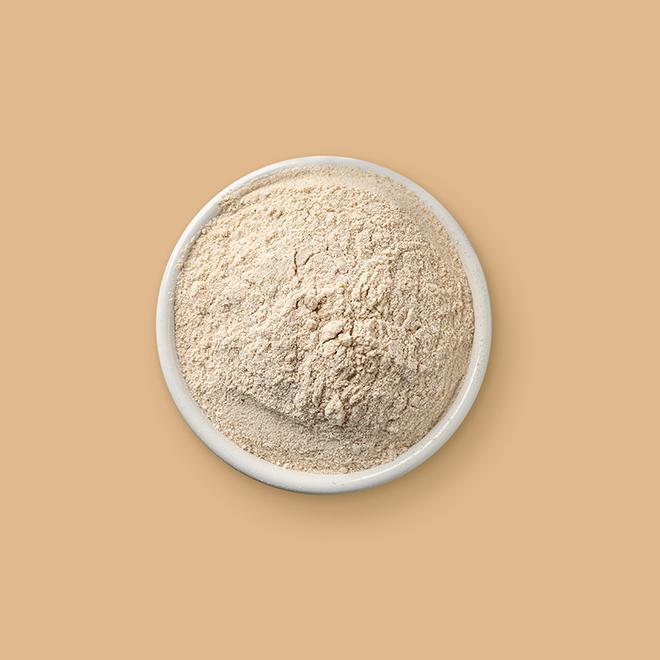Vital Wheat Gluten




Vital wheat gluten, sometimes called gluten flour, is a concentrated form of the protein gluten found in wheat. It's not technically flour itself, but rather a processed product made from wheat flour. Around 70-80% of its composition is gluten, making it significantly higher in protein compared to regular wheat flour (which is about 7-12%).
Vital wheat gluten is made by washing away the starch and bran from wheat flour, leaving behind just the gluten protein. It's used in baking and cooking for various purposes, like improving dough elasticity, texture, and rise.
You can usually find vital wheat gluten in the baking aisle of well-stocked grocery stores, near other flour and baking ingredients. Specialty baking stores or online retailers also offer various options. Some brands offer different textures (fine or coarse), but the impact on baking usually isn't significant.
Like other pantry staples, store vital wheat gluten in a cool, dry place away from direct sunlight and heat. A pantry shelf or cupboard is perfect. Transfer the gluten to an airtight container if the original packaging doesn't provide a secure seal. This prevents moisture absorption and flavor loss.
Use gluten as a base for creating plant-based "meat" alternatives. Combine it with spices, vegetables, and seasonings to create vegan burgers, sausage links, or even mock chicken nuggets.
Gluten's binding properties make it a natural adhesive for food crafting. Use it to glue together pieces of rice paper for wrappers, decorate cakes with delicate sugar structures, or even create edible glue for gingerbread houses.
Gluten isn't just food for us! It's also used in adhesives, textiles, and even bioplastics due to its binding and film-forming capabilities. In ancient Japan, gluten was used in a fascinating art form called "hariko," where it was mixed with lacquer and pigments to create intricate decorative objects.
Use it sparingly: A little goes a long way! Too much vital wheat gluten can make your baked goods dense and gummy.
Xanthan gum and psyllium husk powder are sometimes used as gluten-free alternatives to improve dough structure and texture. However, they won't provide the same protein and elastic properties as gluten.
Seitan, a pure gluten meat substitute, can be made at home using vital wheat gluten. Experiment with different seasonings and cooking methods to create an array of plant-based dishes.
Vital wheat gluten boasts around 70-80% protein, making it a concentrated source for individuals seeking to increase their protein intake. This can be helpful for athletes, vegetarians, or those managing certain health conditions.
For individuals with gluten sensitivity or celiac disease, consuming vital wheat gluten can trigger digestive issues like bloating, diarrhea, constipation, and abdominal pain. In severe cases of celiac disease, it can damage the small intestine and lead to nutrient malabsorption.
Corrections or improvements? Email us at
content@sidechef.com